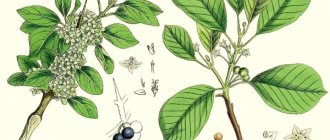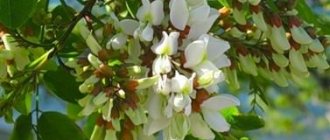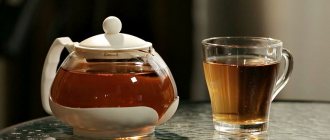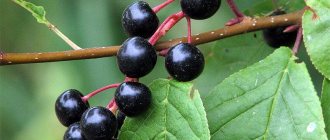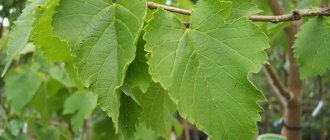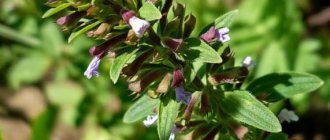There is hardly a person who, at least once in his life, has not encountered buckthorn withdrawal as a medicine. If such lucky people exist, then certainly everyone has seen this plant in nature.
Since childhood, parents have warned their children that “wolf berries,” which is how buckthorn is popularly called, should be avoided in the forest, although they attract with their shiny and seemingly appetizing fruits.
The plant is rich in species - there are about 150 of them, but only three are used in medicine:
- brittle buckthorn (alder)
- zhoster (laxative)
- American
Botanical description of the plant
The brittle buckthorn plant is a shrub or low tree, although in rare cases it reaches 6 meters in height. Leaves of medium size (4-9 cm) in the shape of an ellipse are located on short petioles, opposite each other (opposite) or obliquely opposite.
The trunk of the tree, like the branches of the bush, is smooth. Modest light flowers appear in May-June and bloom almost all summer. Flowers and fruits often coexist on the same tree. Despite their unattractive appearance, they are honey-bearing. In the forest, bees are actively working to collect nectar and pollen.
The berries ripen in August and turn black. Their maturation is accompanied by three colors. At the beginning of summer - green, at the end of June-July - red, in August - black. Quite large (about 1 cm in diameter, round and shiny).
Laxative buckthorn (zhoster) differs slightly in appearance from alder buckthorn. It has a twisted trunk. The tree grows up to 8 meters in height, its bark is dark, almost black. Yellow-green flowers open in the axils of the leaves - elongated, serrated.
The fruits of the joster ripen, gradually changing color from green, reddish to black (in ripe berries). Fruiting occurs in September.
A little about belladonna
The collective name “wolf berries” includes another species – belladonna or belladonna. Its fruits are dangerous; it is not without reason that it is also called “sleepy stupor.” The name, which came to us from the Italian language, means “beautiful woman.”
Belladonna (Belladonna): botanical description, beneficial properties and contraindications of a poisonous plant
Buckthorn is an inedible berry
Buckthorn is a plant in the form of a tree or shrub up to 4.5-5 meters high. It is found in forest clearings and clearings; it loves damp places next to alder. It begins to bloom in May - June and blooms all summer until September. Therefore, on one buckthorn bush or tree you can simultaneously see flowers, flower buds, green, red and black berries. Having encountered such a plant in the forest, even an ignorant person will immediately understand that it is a buckthorn.
Buckthorn berries are inedible
Buckthorn berries are inedible for humans, no one collects them, and they are all left for seeds. But buckthorn berries are a delicacy for the bear, which eats them in large quantities. Buckthorn berries are also readily eaten by birds. They are the sowers of buckthorn in the forest. Many people consider buckthorn fruits to be poisonous, this is due to their strong emetic and laxative effects.
Buckthorn as a medicinal plant
In addition, the bark has medicinal properties and is used in medicine. In medicine, a decoction or extract from buckthorn bark is used as a good laxative for spasmodic colitis and atonic constipation, to regulate intestinal activity, for hemorrhoids, rectal fissures, etc. Buckthorn bark is part of gastric and laxative tea. The bark is harvested in May - June, during sap flow. For medicinal purposes, it is prohibited to use fresh or freshly dried bark, which can cause harmful effects in the gastrointestinal tract. The bark is considered suitable for medicinal use after one to two years of storage. Buckthorn bark and berries are of economic and industrial importance. In industry, juice from buckthorn berries was previously used to make yellow and green watercolor paints. Due to the significant tannid content in the bark, it is used for tanning leather.
The healing properties of zhoster
All three types (alder or brittle, jester and American) buckthorn are used in medicine due to their laxative properties.
The bark is recognized as the most valuable remedy in the fight against constipation. Anthraglycosides are concentrated in it as much as possible. They do not act immediately, but after about 8-10 hours. This must be taken into account when taking the decoction.
But this is not the only thing that buckthorn is famous for. It has found application in the treatment of:
- joint problems (gout);
- heart failure;
- kidney and bladder diseases;
- manifestations of menopause;
- hemorrhoids.
And this is not all the ailments that medicinal herbs can treat.
Use in folk medicine.
- In homeopathic doses, buckthorn berries act as a diuretic.
- A decoction of bark, branches and berries soothes the gastric mucosa during peptic ulcers.
- Has a beneficial effect on the liver and gall bladder.
- Used to improve appetite.
- Fights the invasion of parasites (helminthiasis).
- Some use it to regulate weight if it is associated with lazy peristalsis. However, addiction is possible, and then the weight loss process stops. Buckthorn preparations are not a panacea. Weight loss should be supported by a proper diet and an active lifestyle.
For young children experiencing constipation, a special syrup is prepared from the juice of joster berries. A little more than a quarter cup of juice is mixed with half a cup of granulated sugar and brought to a boil. This elixir can be given even to babies up to 1 year old, but no more than 3 small spoons per day.
Decoctions in the form of lotions have a good effect on the condition of the skin. Many dermatologists advise wiping problem areas of the body and face several times a day. The decoction is easy to prepare. The main thing is to maintain the proportions: mix 1 part of crushed bark with 5 parts of water and simmer over low heat for half an hour.
What is buckthorn and what does it look like?
This plant can grow as a shrub or small tree. The height of the bush varies from 1.5 to 7 m. The trunk is covered with dark gray bark. The leaves of the bush are wide, elliptical in shape. The flowers of the plant are small, yellow and arranged in bunches. The fruits are small spherical drupes with 2-3 seeds. At first the berries are green, then turn red and become black by the end of summer.
Where does it grow? Buckthorn prefers edges, forests, ravines, river and lake banks. Buckthorn habitat: North America and Africa, Europe and Asia.
Planting and care do not take much time, because the plant is not picky about care, having very long roots, it is able to feed itself even on poor soils. However, it prefers areas with moist soil. Buckthorn propagates by root suckers, offshoots, cuttings and seeds. It is best to replant in the fall.
Common varieties - photos
There are about 100 plant species in the world, however, the following varieties are used in medicine:
- Buckthorn is alder-like or brittle.
- American (cascara).
- Zhoster is a laxative.
Let's take a brief look at each variety.
Buckthorn brittle
This tree-like shrub reaches a height of 7 m and has a smooth trunk. The variety got its name due to its brittle branches. Medicine uses the root of this plant as a laxative, and the fruit as a diuretic.
American variety
This variety is a shrub. Characterized by numerous flowers. The bark of the shrub is famous for its beneficial properties. Medicine effectively uses the laxative properties of the bark of this variety of buckthorn. Such drugs are not addictive.
Buckthorn laxative
This variety is characterized by a curved, high trunk covered with rough bark. There are thorns on the branches.
Important! Unripe fruits of this buckthorn variety are poisonous!
Medicine uses the fruits, bark and branches of the bush. Buckthorn-based drugs are prescribed to treat many diseases.
Contraindications
Like any medicines and dietary supplements, buckthorn bark has contraindications and can be harmful. First of all, it is not recommended to take it:
- expectant mothers;
- during breastfeeding;
- with volvulus.
Danger of poisoning
Joster fruits should be used only as prescribed by a doctor. In case of overdose or very long use, dehydration of the body, loss of salts and potassium may occur.
Anyone who harvests fruits on their own should remember that you can only pick ripe berries. Whether it’s edible or not is easy to tell by its appearance and calendar. At the beginning of summer, you don’t even need to hiccup them, but during the ripening season – in August – you can start harvesting them.
Unripe or green ones contain a huge amount of toxins that will inevitably lead to poisoning.
Symptoms of poisoning
Poisoning in adults manifests itself:
- pain in the stomach, sometimes very severe;
- vomiting;
- diarrhea;
- Rarely does blood appear when urinating.
Particular attention should be paid to children, explaining that eating unfamiliar berries in the forest is fraught with dire consequences. It is enough for a child to swallow a few berries, and the result will be disastrous - convulsions, arrhythmia, dizziness - even death!
Treatment of poisoning
Help in case of poisoning must be provided immediately. You cannot do without calling an ambulance, but if for some reason this is problematic, then there are several rules that adults must know:
- rinse the stomach by inducing vomiting (a few presses on the root of the tongue are enough, but before this the sick person is given a mug of warm water to drink);
- give still mineral water to drink along with milk;
- to relieve the burning sensation in the mouth, suck on a few ice cubes or hold any enveloping solution in the mouth - jelly, whipped egg white with water;
- offer an antispasmodic - to reduce stomach pain.
In case of such poisoning, it is strictly forbidden to take laxatives, as well as Aspirin, which can cause bleeding. To avoid force majeure situations, parents should tell their children about the possible consequences of “innocent pranks” in the forest or in a city park. Everyone knows that young children love to try everything “by tooth”, and older children do it out of ignorance.
So, in this case, it is worth reminding: “Forewarned is forearmed.”
By wisely using buckthorn bark or dried fruits, the body will certainly be helped. The most affordable and safest way to “collect” is to buy it at a pharmacy, but those who like to collect nature’s gifts on their own should remember that the bark is obtained in early spring, and the berries are obtained at the border of summer and autumn, when they are absolutely ripe.
Before carrying out treatment with decoctions, tinctures, syrups, it is a good idea to consult your doctor!
Use in folk medicine
In official medicine, several preparations of buckthorn are used in the form of dry or liquid extract, syrup, and tablets. Also, an extract from the plant is included as a component in laxatives, stomach, antihemorrhoidal medications and herbal preparations.
The most famous effect of buckthorn is as a laxative. Due to its mild effect on the intestinal mucosa, which appears 8-10 hours after administration, it acts only on the walls of the large intestine and does not irritate the walls of the small intestine.
Under the influence of the components of buckthorn, the absorption of liquid by the walls of the large intestine is reduced, which leads to additional dilution of the stool. The effect of these drugs is milder than that of similar drugs of senna and aloe, so it is prescribed not only for prolonged constipation, but also for hemorrhoids and painful fissures of the rectum. But it should be remembered that the beneficial and medicinal properties of buckthorn bark have contraindications for long-term use. The fact is that such drugs are addictive and cease to have the desired effect.
The medicinal and laxative properties of buckthorn bark are often mentioned on forums discussing recipes for weight loss. Many claim that when taking decoctions and teas, kilograms “fly away” without much hassle. Nutritionists say that taking such drugs is effective in combination with a protein diet, which often causes constipation in those losing weight.
Recommendations for use
But it is worth remembering that taking laxatives is not a panacea and not a way to get rid of excess calories. The fact is that the decoction acts at the very end of the digestive tract, when all the fats and carbohydrates have managed to be absorbed into the walls of the small intestine.
Taking laxatives too intensively can cause lazy bowel syndrome and severe constipation. In addition, laxative decoctions lead to dehydration of the body and the excretion of potassium, magnesium, iron and vitamins, which provokes a deterioration in the general condition.
The recipe for a laxative infusion is simple: take the dried bark and grind it so that the maximum amount fits into a tablespoon. Then mix the raw materials with a glass of boiled water and close in a thermos for 12 hours. Take everything in 1 serving before bed, warm it up a little.
Diseases for which decoction is taken
The decoction is also prescribed for:
- indigestion and digestive disorders;
- ulcers and intestinal diseases;
- stomach atony;
- fever;
- migraine;
- gout;
- diseases of the liver and biliary tract.
External use
For external use of buckthorn: add 1 tablespoon of crushed bark to half a liter of water and boil in a water bath. This decoction is prescribed for:
- Hemorrhoids (in the form of microenemas and warm baths). Kupena infusion also helps relieve inflammation in hemorrhoids.
- Treatment of skin diseases in the form of lotions, rinses.
- Skin itching with scabies, skin rashes.
- Furunculosis, festering wounds.
- Scabbers, for washing the body.
For external use, you can also prepare an alcohol tincture. For it, take 1 part of ground dry raw materials, 5 parts of pure alcohol and leave in the dark for 2 weeks. The finished product is filtered and lubricated on boils and festering wounds no more than 2-3 times a day. Preparations based on the poisonous plant curare are also used externally, lotions from which help relieve swelling and inflammation in bruises and clean purulent wounds.
It has been scientifically proven that volatile compounds in the leaves exhibit fungicidal activity and, when taken prophylactically, reduce the risk of tuberculosis and herpes simplex.
How to use
Dried bark can be purchased at any pharmacy and used for medicinal purposes as tinctures, decoctions, and infusions.
For constipation
Infusion. Grind dry bark (10 g) and pour boiling water (2 tbsp.). Leave for 8-10 hours. Strain through a sieve. Use at night. Dose: 2 tbsp. spoons for 10 days.
Decoction. Pour two tablespoons of bark with boiling water (a glass). Place in a saucepan with water. Stir constantly until the water in the container boils. Leave for 30 minutes and let the contents cool slightly. Strain and add cold boiled water to the original dose, i.e. 200 ml.
Take the decoction 2 times a day (morning and evening). Dosage: 1 tablespoon at a time. Gradually increase the dose to 0.5 cups. This is in case there is no result after 9-11 hours. The duration of treatment is one decade. Then, pause. So that there is no addiction.
During the procedures, the urine turns a rich yellow color. This is normal. There is no need to be afraid of this, since chrysophanic acid gives this effect.
Side effects may include abdominal pain and skin rashes.
We advise you to read: Medicinal herb - use at home
Herbal collection. Prepare ingredients in the following proportions:
- Grind the buckthorn bark to a powder consistency and take 60 g;
- coriander in the form of fruits 40 g;
- Grind steelberry root to a powder of 30 g;
- dried burdock root 40 g.
Pour boiling water (500 ml) over the herbal mixture and place in a pan of water. Once 40 minutes have passed, turn off and leave to cool. Strain and take 100 ml before meals. The course of treatment is 30 days. Then take a break - 3 months.
Pharmacy drugs. In traditional medicine, tablets, syrup, filter bags, and an extract based on buckthorn bark are used.
Pills. Dosage: 1-2 tablets before bedtime.
Syrup. The product not only helps with chronic constipation, but also removes fecal stones. Dose: dilute 15 ml of syrup with a small amount of water and take morning and evening.
Filter packages. The composition of the packaged pacts is similar to a decoction prepared with your own hands. Pour 100 ml of boiling water over one packet (6.0 g) and leave for 15 minutes. Dosage: 100 ml twice a day.
Extract. Take 25 to 40 drops diluted with water twice a day.
Constipation should stop on day 3 with all methods chosen. If this does not happen, you should consult a doctor.
For weight loss
In its pure form, buckthorn will not help much in losing excess weight, so it is used in herbal teas.
Collection 1. Marshmallow root, buckthorn bark, coltsfoot, immortelle, yarrow are taken in equal parts of 50 g. Mix the collection of herbs and pour 2 tbsp. spoons into a container. Pour boiling water (250 ml) into the mixture and place inside another pan of water for 15 minutes. Turn off the stove and leave to steep for 40 minutes. Subsequently, strain and replenish the initial dose (250 ml) with boiled water. Divide the infusion into two parts and take twice a day before meals 40 minutes or after. Do not eat anything for two hours. Take the decoction only warm, and prepare a fresh dose every day.
Collection 2. 20 g each of parsley root, fennel berries, underground part of dandelion. Buckthorn root 60 g. Pour 1 liter of boiling water over the herb and make an infusion as in collection No. 1. Divide the decoction into 4 equal parts and drink 20 minutes before meals 4 times a day.
The course of treatment is up to 2 months. Combine taking the decoction with exercise, body wraps, diets, and taking baths with herbs (oregano, coltsfoot, birch leaves).
For external use
The tincture will help get rid of acne, eczema and other skin problems. It has a soothing, disinfecting, wound healing effect.
Grind the bark (50 g) and pour in vodka (150 ml). Leave for 10 days. Shake the container from time to time. Strain and wipe the affected areas of the skin or make lotions.
You may be interested in an article about treating periodontitis at home.
There is also a useful article on the treatment of atrophic gastritis with folk remedies.
Here you will learn how to treat chronic endometritis.
For the liver
To cleanse the liver, restore cells, and normalize the functioning of the bile ducts, take a decoction according to the recipe described above three times a day before meals. Dosage: one teaspoon at a time.
We recommend reading: Calendula tincture - rules for use in home medicine
For stomach pain
To relieve stomach pain, you should prepare an infusion. To do this, pour 20 g of buckthorn bark with boiling water (200 ml). Place on the stove and boil for 7 minutes. Remove from the stove, wrap in terry cloth and leave for 30 minutes. Take the strained infusion twice a day, 1 tbsp. spoon.
Alder buckthorn (Frangula alnus)
Buckthorn bark (Cortex Frangulae). Buckthorn (Rhamnaceae).
Alder buckthorn is a shrub or low tree 1-3 m high. Branches without thorns. The bark of young branches is reddish-brown, shiny, with transversely elongated whitish lenticels; on old branches and trunks it is grayish-brown with lentils blurring into gray spots. The leaves are alternate, entire, pointed-elliptic with parallel curved veins. The flowers are bisexual, five-membered. When ripe, the color of the fruit will change from green to red and purple-black. The fruit is a juicy coenocarpous drupe, poisonous. The ossicles are flattened with a beak-shaped outgrowth. It blooms in May–June, bears fruit in August–September. It has a Eurasian type of range. Occupies the entire European part of the CIS, grows in the Caucasus and in the central regions of Western Siberia; Northern Kazakhstan and southern Krasnoyarsk Territory. Grows as undergrowth in pine, partly spruce and mixed forests.
Alder buckthorn. Preparation, drying and storage. Buckthorn bark is harvested in the spring, during the period from the moment the buds swell until the beginning of flowering. The plant is cut down or cut down at a height of 10-15 cm, leaving a stump for regrowth. On cut trunks and thick branches, circular cuts are made at a distance of up to 25-30 cm, they are connected with a longitudinal cut and the bark is removed, which is then cleared of bushy lichens. You cannot cut the bark with a knife, because... the pieces are narrow and contain wood residues. Harvesting is carried out in areas designated by the forestry department. Repeated harvesting in the same area is possible in 10-15 years. Dry under awnings or in well-ventilated attics. The bark is laid out in a loose layer, making sure that the tubular and groove-shaped pieces of bark do not nest into each other. During drying, the bark is turned over 1-2 times. When drying outdoors, the bark is brought indoors overnight or covered with a tarp. Drying is stopped when the bark becomes brittle, i.e. When bent, it breaks with a bang. When harvesting alder buckthorn bark, the bark of other accompanying shrubs and small trees may be collected by mistake: jester, alder, mountain ash, bird cherry and various types of willow. Alder buckthorn differs from all these plants in that when you lightly scrape off the outer layer of the cork, a layer of crimson-red color (frangulin layer) is found on its bark, while in other shrubs and trees a green or brown layer is visible. Store in dry, well-ventilated areas.
Alder buckthorn. Chemical composition. Up to 8% of anthracene derivatives are franngularoside, frangulin hetero- and dianthrones, monomeric compounds in both reduced and oxidized forms (glucofrangulin, frangulin, frangulaemodin). In fresh bark, reduced forms predominate. During long-term storage and heating of C, their oxidation and enzymatic hydrolysis occur with the formation of various intermediate products.
Alder buckthorn. Application. Buckthorn bark has a specific locally irritating laxative effect, manifested by increased peristalsis of the colon. At the same time, the absorption of fluid by the mucous membrane of the colon slows down, which leads to the dilution of feces and an increase in their volume. The action of buckthorn develops slowly, the effect is observed 8-10 hours after administration. Buckthorn bark preparations are used for intestinal atony, chronic constipation, etc. diseases. It should be borne in mind that the reduced forms of anthracene derivatives contained in freshly harvested buckthorn bark have a pronounced emetic effect. In this regard, buckthorn bark is used either after one-year storage or after processing the raw materials at 100°C for several hours. Under these conditions, anthranols are oxidized to anthraquinones and the emetic effect disappears. The recommended extemporaneous form is a decoction of 1:20.
Substances used for the production of drugs: 1. Buckthorn bark (buckthorn bark powder). Included in “Gastric collection No. 3” (Species stomachicae No. 3), “Antihaemorrhoidal collection” (Species antihaemirroides), “Laxant collection No. 2” (Species laxantes No. 2), drugs “Ramnil” (Rhamnilum), “Vicalin” ( Vicalinum), “Vicairum”. 2. Buckthorn bark extract (dry, liquid). Used for the production of drugs “Alcid V” (Alcid V), “Buckthorn extract tablets” (Tabulettae extracti Frangulae), “Buckthorn extract liquid” (Extractum Frangulae fluidum), “Depurofluxum”, “Buckthorn syrup” (Sirupus cortexi Frangulae ).
